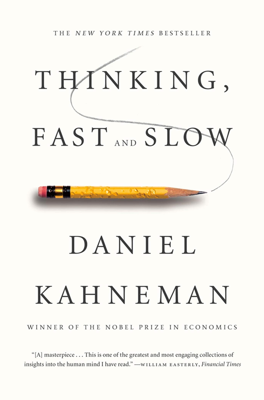Norms, Surprises, and Causes
Assessing Normality and Expectations
System 1's Role in Understanding Normality: System 1 maintains a model of the world, associating common occurrences and their timeframes to form expectations of what is normal. This model facilitates immediate interpretations of the present and future expectations.
Active and Passive Expectations: Expectations can be either active (consciously awaited) or passive (subconsciously anticipated due to normality). Surprises arise when an event defies these expectations, indicating a deviation from what is perceived as normal.
Influence of Experiences on Normality Perceptions
Single Events Modifying Expectations: Experiences, even singular ones, can adjust what is considered normal. For instance, a repeated unusual encounter, like meeting the same person in different global locations, resets the 'normality' associated with that person or situation.
Creation of New Norms: Repeated peculiar events at the same location can form a new specific expectation or norm, as illustrated by the expectation of seeing burning cars on a particular stretch of road after witnessing it on consecutive occasions.
Understanding Norm Theory
Norm Theory and Perception of Normalcy: The concept of norm theory explains how certain events or anomalies redefine our sense of what is typical or expected. This theory is underpinned by associative links that enhance the comprehensibility of unusual events when related occurrences are recalled, making them seem less surprising.
Example of Norm Theory in Action: An instance like a diner’s adverse reaction to soup can alter the perceived normality of subsequent related events, such as another guest expressing distress upon tasting the same soup. These reactions become linked in memory, shaping future expectations.
Perceiving Causes and Emotional Reactions
Automatic Association of Causes and Effects: System 1 automatically seeks causal explanations for behaviors and events, crafting narratives that reason why things happen, mostly without conscious input from System 2.
Illustration Through Bond Market Reactions: Changes in the bond market following significant news events (like Saddam Hussein's capture) are instinctively attributed to these events, fulfilling the human bias towards creating coherent stories even if the causal links are not logically sound.
Causal and Statistical Reasoning
- Challenges in Applying Appropriate Reasoning: People tend to default to causal reasoning even in contexts better suited for statistical thinking, due to System 1’s limitations and the general lack of systematic training in statistical reasoning.
Role of Psychological Causality in Everyday Understanding
Perception of Intention and Agency: Humans are naturally inclined to infer intentions and emotional states behind actions, attributing them to agents with distinct dispositions and goals, as illustrated by interpreting geometric shapes (like triangles and circles in a specific animation) as having emotions and intentions.
Physical Versus Intentional Causality: People differentiate between physical causality (like one billiard ball striking another) and intentional causality (actions perceived as driven by personal decisions or desires), often attributing the latter to immaterial entities or the soul.
Summarizing Norms and Causes
- System 1’s extensive reliance on norms and associative memory facilitates quick assessments and reactions based on what is considered normal or typical. This system’s propensity for establishing and modifying norms based on new experiences influences our ongoing perceptions and expectations, underscoring the automatic and subconscious nature of much human thinking.
